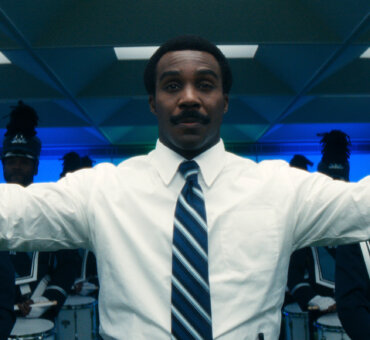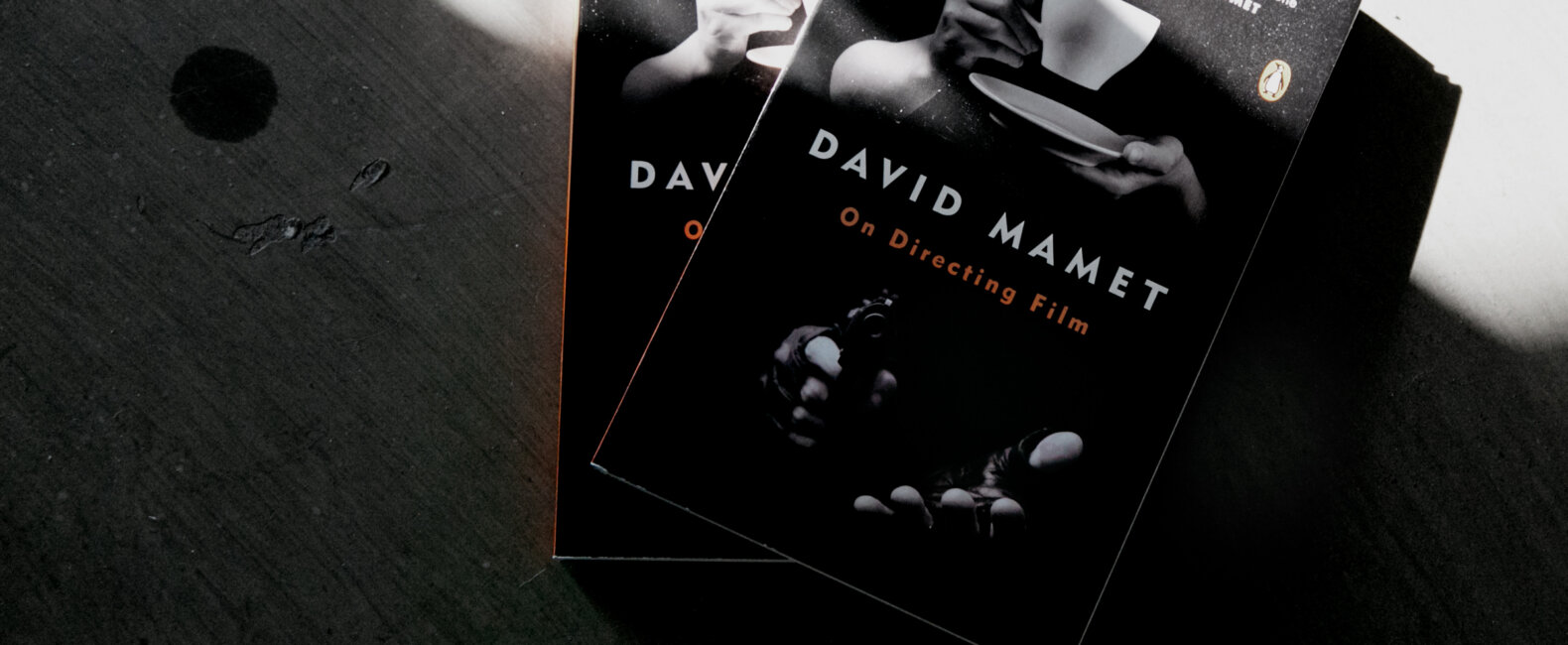On Directing Film by David Mamet is a short book, just over 100 pages; but it contains everything Mamet knows about directing films, which he admits isn’t much. But then, that’s his whole point. Directing is a craft made up of a few simple tools mastered painstakingly over time. And one of those tools — maybe the most important one — is understanding how to craft scenes. “The unit with which the director most wants to concern himself is the scene,” Mamet explains. “Make the beats serve the scene, and the scene will be done; make the scenes, in the same way, the building blocks of film, and the film will be done.” To put it gently, some of Mamet’s perspectives can be polarizing, but asking them can challenge your own perspective on what makes an effective scene.
Here are some thoughts on the “building blocks” of film, courtesy of filmmaking legend David Mamet:

It’s not up to your actors to bring meaning to the scene. It’s up to your scene to bring meaning to your scene.
1. Tell the Story of the Scene in the Cuts
Mamet believes in telling stories in cuts, through “a succession of images juxtaposed so that the contrast between these images moves the story forward in the mind of the audience.” This as opposed to what most films do: follow the protagonist around, see if she does anything interesting. Mamet is resolutely against following protagonists (he hates Steadicams). Think of it this way: instead of watching a man looking into his refrigerator, rubbing his stomach, and thinking to himself in a voiceover, “I’m hungry right now” — you cut to a man’s face, then you cut to the inside of a refrigerator, and the idea of hunger is created in the audience’s mind. That is a scene told through cuts.
2. Find the Super-objective of the Scene (Don’t Lose Sight of It)
Every scene has an objective within it. A super-objective. The character wants something, and we’re here to see whether or not she gets it. “As long as the protagonist wantssomething,” Mamet writes, “the audience will want something [too].” Every scene (and so every film) is a document of a character trying to get something — even something as small as a cup of coffee — and it ends when she either gets it, or fails completely. “The question the answer to which will unerringly guide us is, ‘What is the objective of this scene?’”
3. Be Logical, Not Interesting
Mamet has no interest in “interesting” scenes. “It’s not our task to make the story interesting,” he writes. “The story can only be interesting because we find the progress of the protagonist interesting. It is the objective of the protagonist that keeps us in our seats.” All the audience cares about is what happens next in the pursuit of that objective. “You tax the audience every time you don’t move on to the next essential step of the progression as quickly as possible.” This might seem like a downer; but in fact, it’s a liberation. You don’t have to worry about being clever. You don’t have to, as Mamet puts it, “trick the audience into paying attention.” All you have to worry about is what happens next. The answer — in retrospect — is almost always obvious.
4. Keep the Acting Simple
It’s not up to your actors to bring meaning to the scene. It’s up to your scene to bring meaning to your scene. This meaning is created when you make your shot list. When you decide on your juxtaposition of images. What do your actors have to do? Perform their actions as simply as possible. According to Mamet: “This is the greatest lesson anyone can ever teach you about acting: Perform the physical motions called for by the script as simply as possible. Do not ‘help the play along.’ … The more the actor tries to make each physical action carry the meaning of the ‘scene’ or the ‘play’ the more that actor is ruining your movie.” Keep it simple. Keep it unemotional. The emotion will be created in the mind of the audience through the juxtaposition of images. Presto appearo! A magic trick.

An effective scene is mostly about what it doesn’t say. You pull your audience along by telling them just enough.
5. Remove Every Part of the Scene That Is not Essential
Scenes are meant to be efficient little machines, irreducibly complex. The more unnecessary parts there are, the more likely it is that something will break down. “The way you understand whether [a] concept is essential or not is to attempt to tell the story without it,” Mamet explains. “Take it away and see if you need it or not. If it’s not essential, you throw it out.” Every piece of your scene (and so every piece of your film) should be load bearing.
6. Withhold Information
An effective scene is mostly about what it doesn’t say. You pull your audience along by telling them just enough. Give them too much, and they’ll be bored; give them too little, and they’ll be lost. “How do we keep [the audience’s] attention?” Mamet writes. “Certainly not by giving them more information but, on the contrary, by withholding information — by withholding all information except that information the absence of which would make the progress of the story incomprehensible.” Be ruthlessly withholding. It is, in this case, a form of generosity.
7. Character Is Established Through Action
Don’t worry about establishing characters in your scenes. They will establish themselves by the things they choose to do in pursuit of the scene’s objectives. Mamet: “The truth is you never have to establish the character. … The character is just habitual action. ‘Character’ is exactly what the person literally does in pursuit of the super-objective, the objective of the scene. The rest doesn’t count.” Like Rachel Dawes told Bruce Wayne in that hotel lobby in Batman Begins: “It’s not who you are underneath. It’s what you do that defines you.”
8. Be Blunt
Ambiguous scenes are boring. Don’t make them. “Listen to yourselves when you describe these shots,” Mamet says. “When you use the words ‘just,’ ‘kind of,’ and ‘sort of,’ you’re diluting the story. The shots shouldn’t be just, kind of, or sort of anything.” Be blunt. Be bold. Fight against wishy-washiness in all its sinister forms.
9. Know When a Scene Is Over
When is a scene over? When there’s nothing left for the character to do. If the driving force of a scene is its super-objective, a scene is complete when the super-objective is either accomplished or forever out of the protagonist’s reach. Those two situations. No others.

















































































